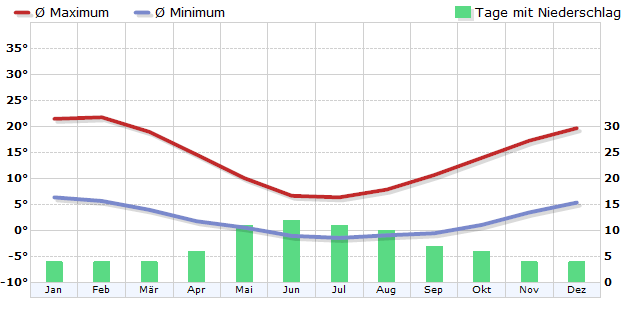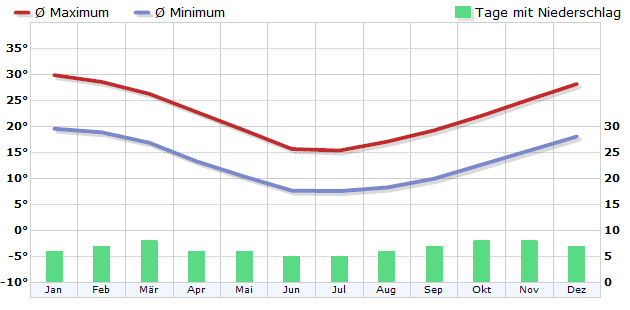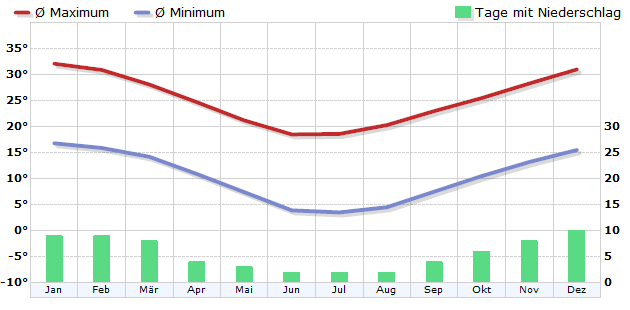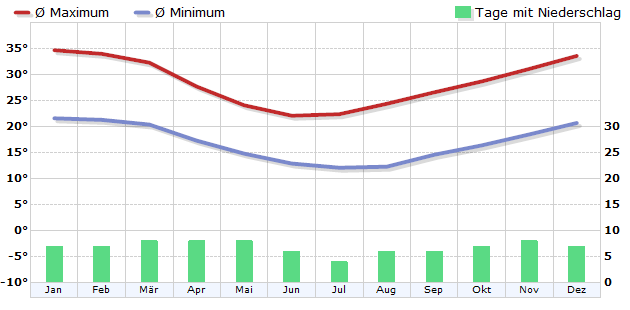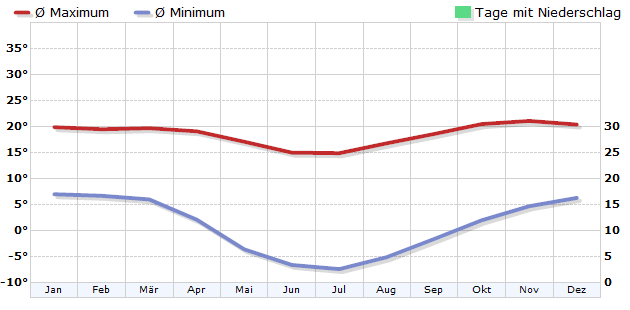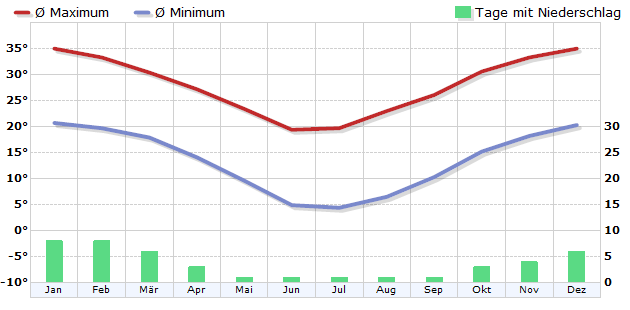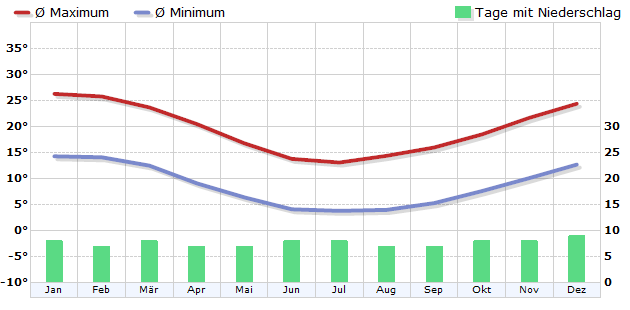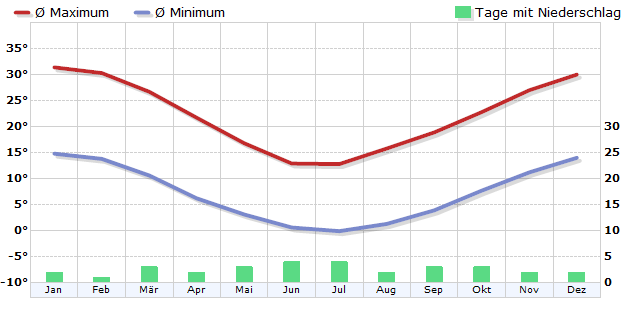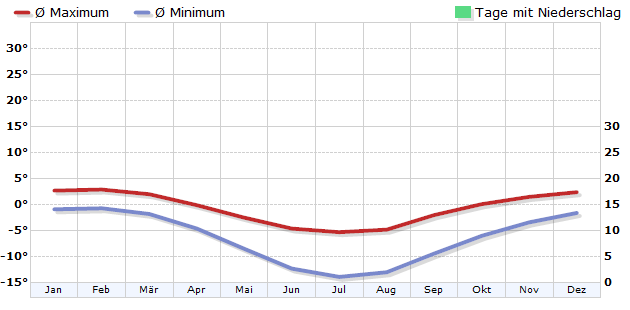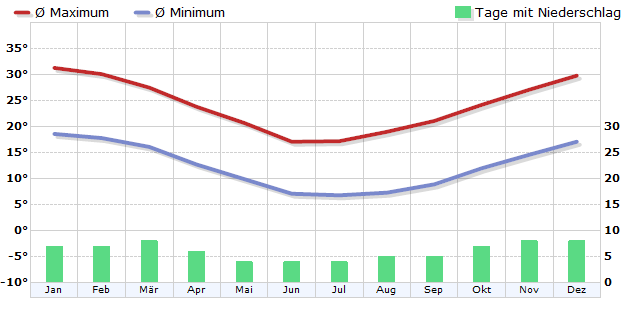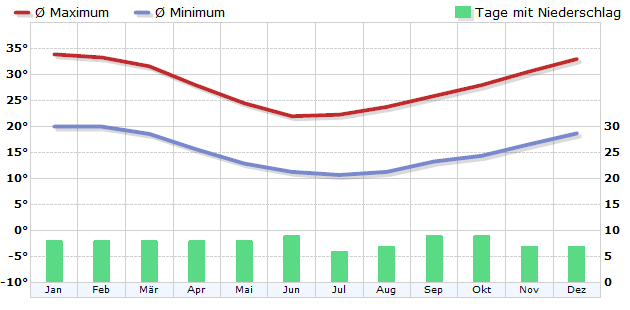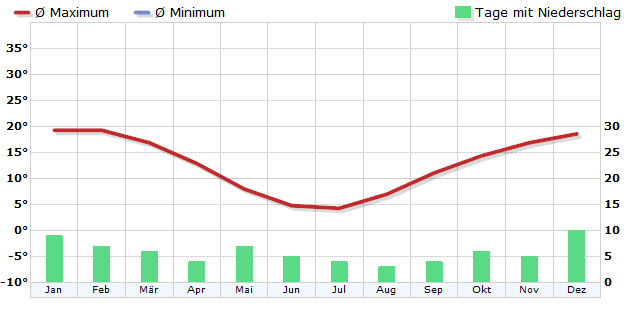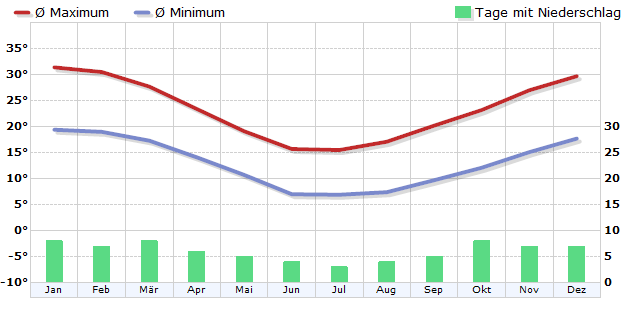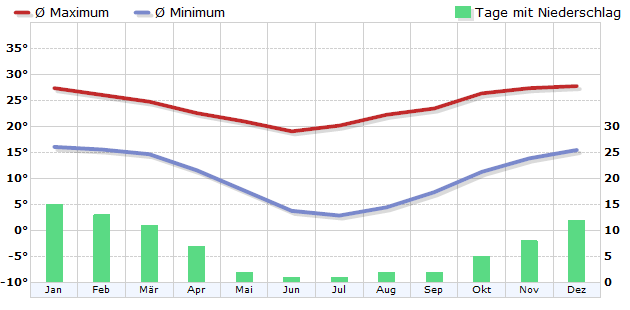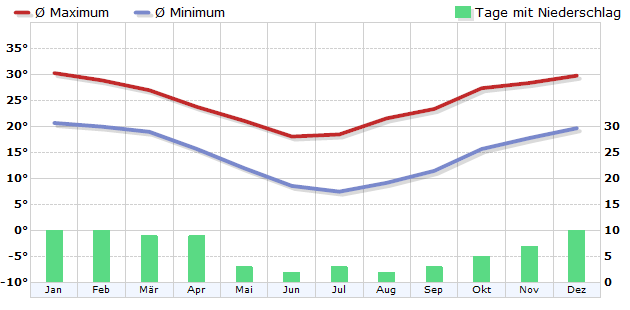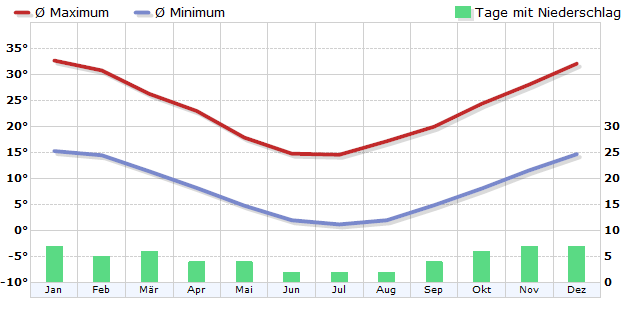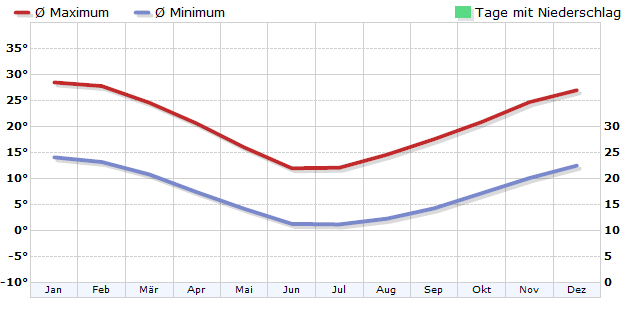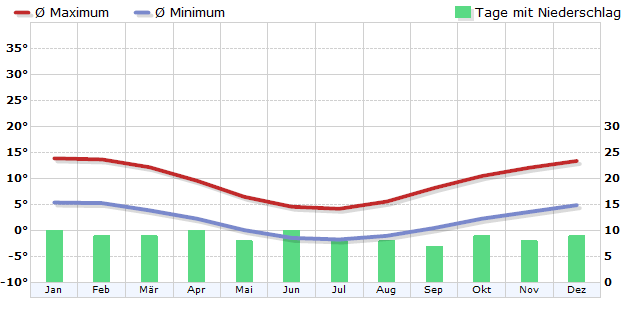Climate Argentina
Argentina stretches from the Tropic of Cancer to the Antarctic Sea and has considerable differences in altitude from west to east, from the 7,000 m high Andes to the Atlantic Ocean. This geographical location explains Argentina's climatic diversity. In the north it is subtropical, in the pampas temperate and in Patagonia cold. In some parts of the country there is frequent and very abundant rainfall, while in others there is drought.
Argentina's seasons are the opposite of those in Europe. The months of January and February are the hottest months in which temperatures of up to 38°C are measured in Buenos Aires. July and August are the coldest months with temperatures ranging from 1 to 15°C. The average temperatures in Buenos Aires are: Summer 23°C (high humidity), winter 12°C, spring and autumn 17°C.
The subtropical north should be visited in the period from May to September, while the summer months from December to February/March should be chosen for a visit to southern Argentina (Patagonia and Tierra del Fuego). Otherwise, spring (October/November) and autumn (March/April) are considered the best travel seasons.
Destinations
- Bahia Blanca
- Bariloche
- Buenos Aires
- Cordoba
- Formosa
- La Quiaca / Anden, Prov. Jujuy
- La Rioja
- Mar del Plata, Prov. Buenos Aires
- Neuquén
- Orcadas del Sur (South Orkney Islands)
- Paraná
- Posadas, Prov. Misiones
- Rio Gallegos, Prov. Santa Cruz
- Rosario, Prov. Santa Fé
- Salta
- San Miguel De Tucumán
- Santa Rosa, Prov. La Pampa
- Trelew
- Ushuaia / Feuerland


